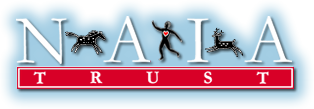Agriculture started man on the road to civilization, and domestication of food and working animals accelerated the journey. No longer forced to hunt for sustenance or depend on stumbling across dead but still edible carcasses, early farmers at first tamed cattle, sheep, goats, pigs, and chickens to supply food, then used selective breeding to make animals easier to handle and to increase production. Domestication became a two-way street: farmers protected animals from predators and harsh weather and offered a reliable source of forage while animals provided milk, meat, eggs, leather, wool, transportation, hauling and field work.
The importance of domestication of livestock cannot be overstated. The raising of sheep in particular had a profound influence on the production of woolen fabric in Britain’s Industrial Revolution, cattlemen opened the American West to settlement, and easier access to animal protein improved the health of people throughout the world. And no discussion of animals in agriculture is complete without noting the contributions of dogs and horses. Horses provided transportation and draft power; dogs protected flocks and herds, helped haul goods to market, and controlled vermin that could destroy food supplies.
In the past two centuries, we have improved the quality and quantity of the food and fiber gained from livestock agriculture and enhanced the health and well-being of farm and ranch animals. To this end, we make use of individual and community know-how and scientific research, husbandry practices that provide for proper animal care, and land use practices that limit erosion and pollution and foster species diversity. American farmers have improved these practices more than any others, and modern American agricultural methods supply us with an unprecedented bounty of quality meat, eggs and dairy products and with leather, wool, furs, and myriad items derived from animal byproducts. The vast majority of Americans enjoy these things as part of a well-balanced diet or lifestyle, and developing countries look to US agriculture to help them overcome the devastating problems of malnutrition, starvation, and economic hardship that plague their nations.
In spite of these advances, animal rights activists claim that the practices used by American livestock farmers are inherently cruel. More than any other animal-related industry, animal agriculture is a victim of illicit undercover spying by activist groups, and attempts to stop their espionage are often countered by claims of First Amendment violations. Radicals use digital videos edited out of context for advocacy impact, and they take advantage of the lack of general public and legislator awareness of sound animal science to fuel legislative campaigns and lawsuits: they have been successful in changing housing practices for egg-laying hens in California and pigs in several states and publicly press for change as a means to fundraise in any area that may evoke an emotional response – areas that are continuously under examination and research by animal sciences for the kinds of improvements that keep US agriculture at the forefront as one of the most successful and humane enterprises in the world.
NAIA hails American farmers and ranchers as world leaders in livestock care and the establishment of humane housing and care practices. We recognize that farmers and ranchers can raise livestock in a manner compatible with wildlife and habitat management, and we understand that there is no one-size-fits-all set of practices suited to all animals and all agricultural entities. Species differ in their needs and adaptations and farmers and ranchers have different circumstances, knowledge bases, and financial opportunities. We acknowledge and support these differences within the broad range of humane practices supported by science, tradition, and expertise.

